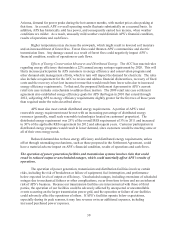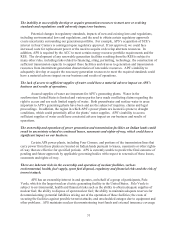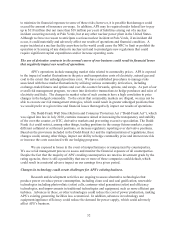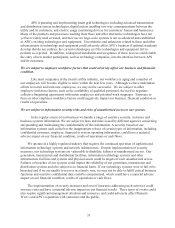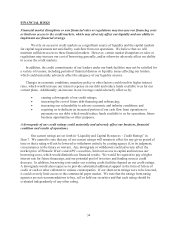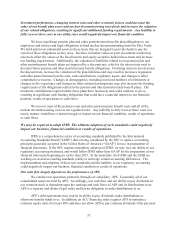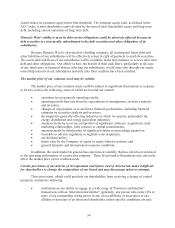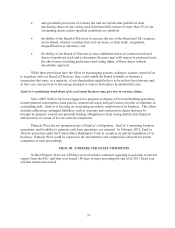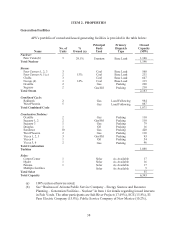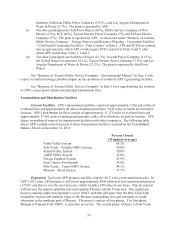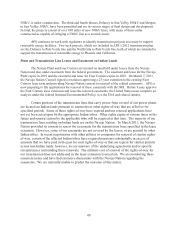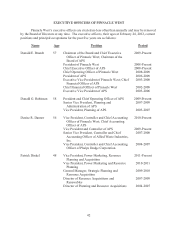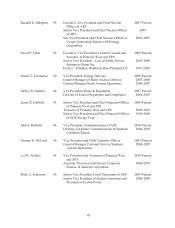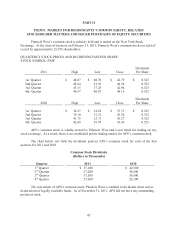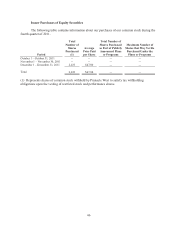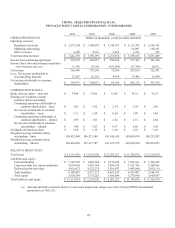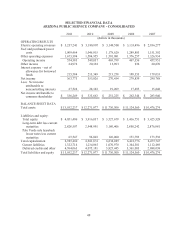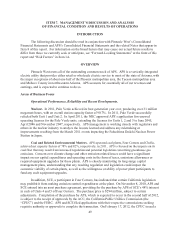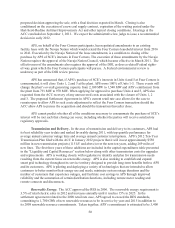APS 2011 Annual Report Download - page 64
Download and view the complete annual report
Please find page 64 of the 2011 APS annual report below. You can navigate through the pages in the report by either clicking on the pages listed below, or by using the keyword search tool below to find specific information within the annual report.40
500kV, is under construction. The third and fourth phases, Delaney to Sun Valley 500kV and Morgan
to Sun Valley 500kV, have been permitted and are in various stages of final design and development.
In total, the projects consist of over 100 miles of new 500kV lines, with many of those miles
constructed as capable of stringing a 230kV line as a second circuit.
APS continues to work with regulators to identify transmission projects necessary to support
renewable energy facilities. Two such projects, which are included in APS’s 2012 transmission plan,
are the Delaney to Palo Verde line and the North Gila to Palo Verde line, both of which are intended to
support the transmission of renewable energy to Phoenix and California.
Plant and Transmission Line Leases and Easements on Indian Lands
The Navajo Plant and Four Corners are located on land held under leases from the Navajo
Nation and also under easements from the federal government. The easement and lease for the Navajo
Plant expire in 2019 and the easement and lease for Four Corners expire in 2016. On March 7, 2011,
the Navajo Nation Council signed a resolution approving a 25-year extension to the existing Four
Corners lease term and providing Navajo Nation consent to renewal of the related easements. APS is
now preparing to file applications for renewal of these easements with the DOI. Before it may approve
the Four Corners lease extension and issue the renewed easements, the United States must complete an
analysis under the federal National Environmental Policy Act, the ESA and related statutes.
Certain portions of the transmission lines that carry power from several of our power plants
are located on Indian lands pursuant to easements or other rights-of-way that are effective for
specified periods. Some of these rights-of-way have expired and our renewal applications have
not yet been acted upon by the appropriate Indian tribes. Other rights expire at various times in the
future and renewal action by the applicable tribe will be required at that time. The majority of our
transmission lines residing on Indian lands are on the Navajo Nation. In March 2011, the Navajo
Nation provided its consent to renew the easements for the transmission lines specified in the lease
extension. However, some of our easements are not covered by the leases, or are granted by other
Indian tribes. In recent negotiations with other utilities or companies for renewal of similar rights-
of-way, certain of the affected Indian tribes have required payments substantially in excess of
amounts that we have paid in the past for such rights-of-way or that are typical for similar permits
across non-Indian lands; however, we are unaware of the underlying agreements and/or specific
circumstances surrounding these renewals. The ultimate cost of renewal of the rights-of-way for
our transmission lines not addressed in the lease extension is uncertain. We are monitoring these
easement issues and have had extensive discussions with the Navajo Nation regarding the
easements. We are currently unable to predict the outcome of this matter.


